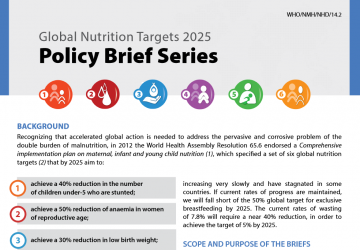Wasting Policy Brief
The World Health Organization (WHO), in collaboration with 1,000 Days, developed a series of six policy briefs linked to each of the global nutrition targets. These policy briefs provide essential guidance to policymakers regarding actions needed in order to achieve progress toward improving maternal and child nutrition and achieving the global nutrition targets by 2025.
Children who suffer from wasting as a result of severe malnutrition are at risk of serious illness and death. Therefore, urgent action is needed to reach the target by ensuring that severely malnourished children are treated for wasting and that more is done to prevent this life-threatening condition.







